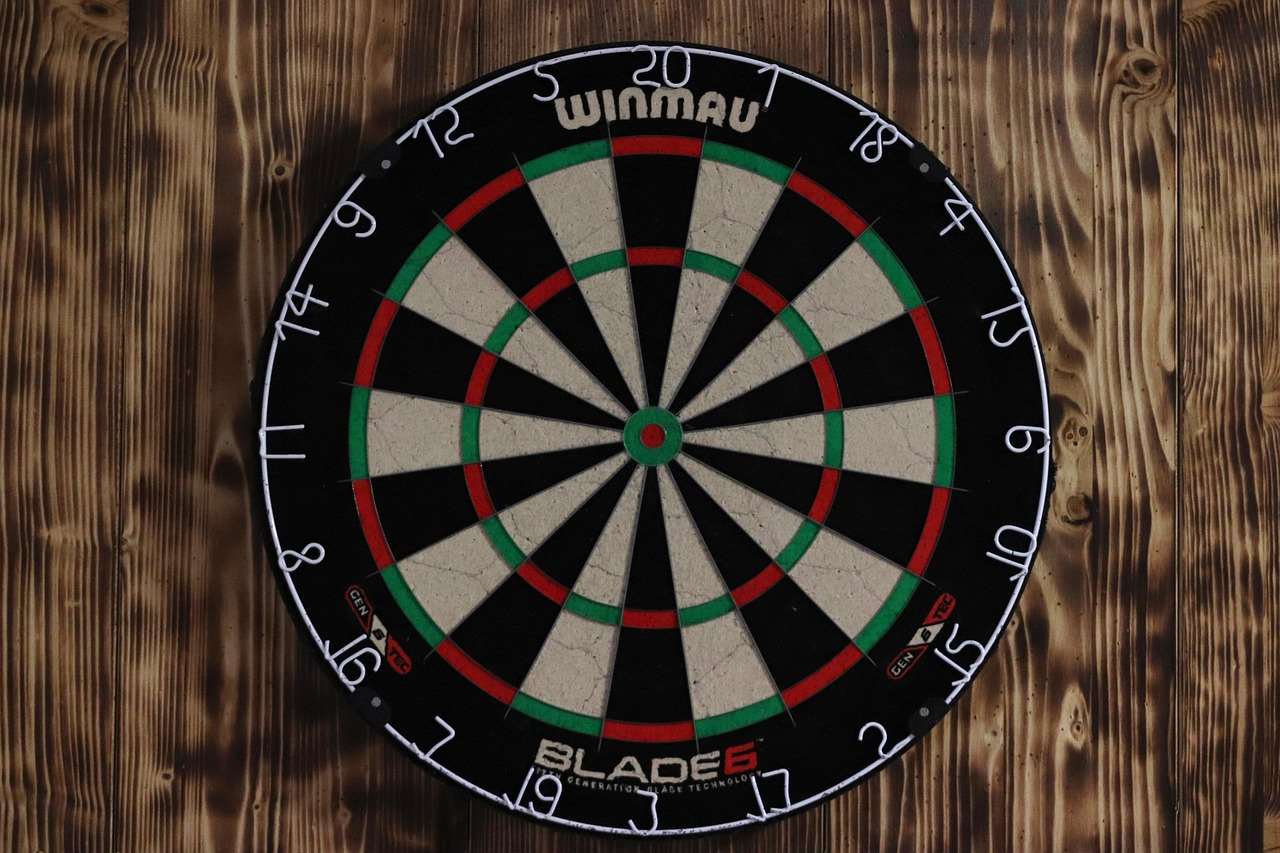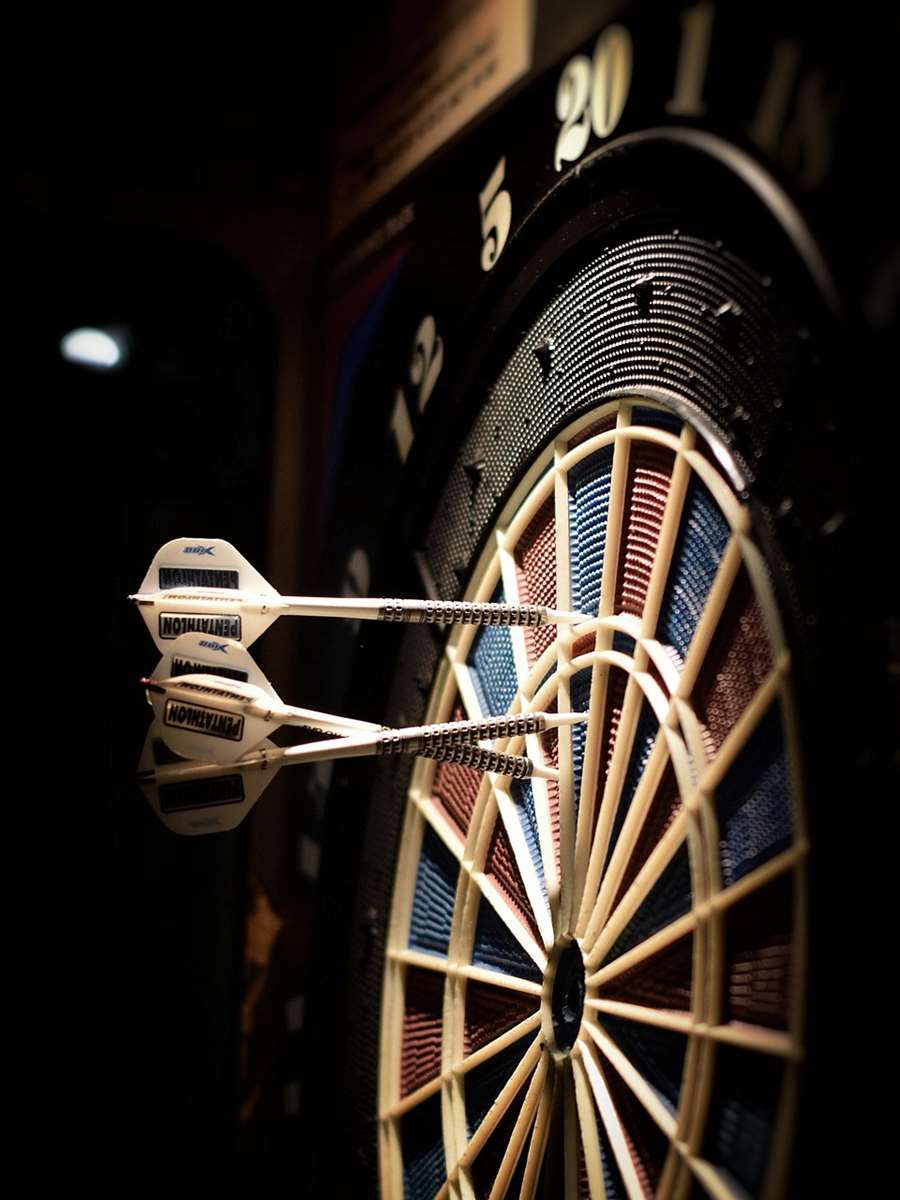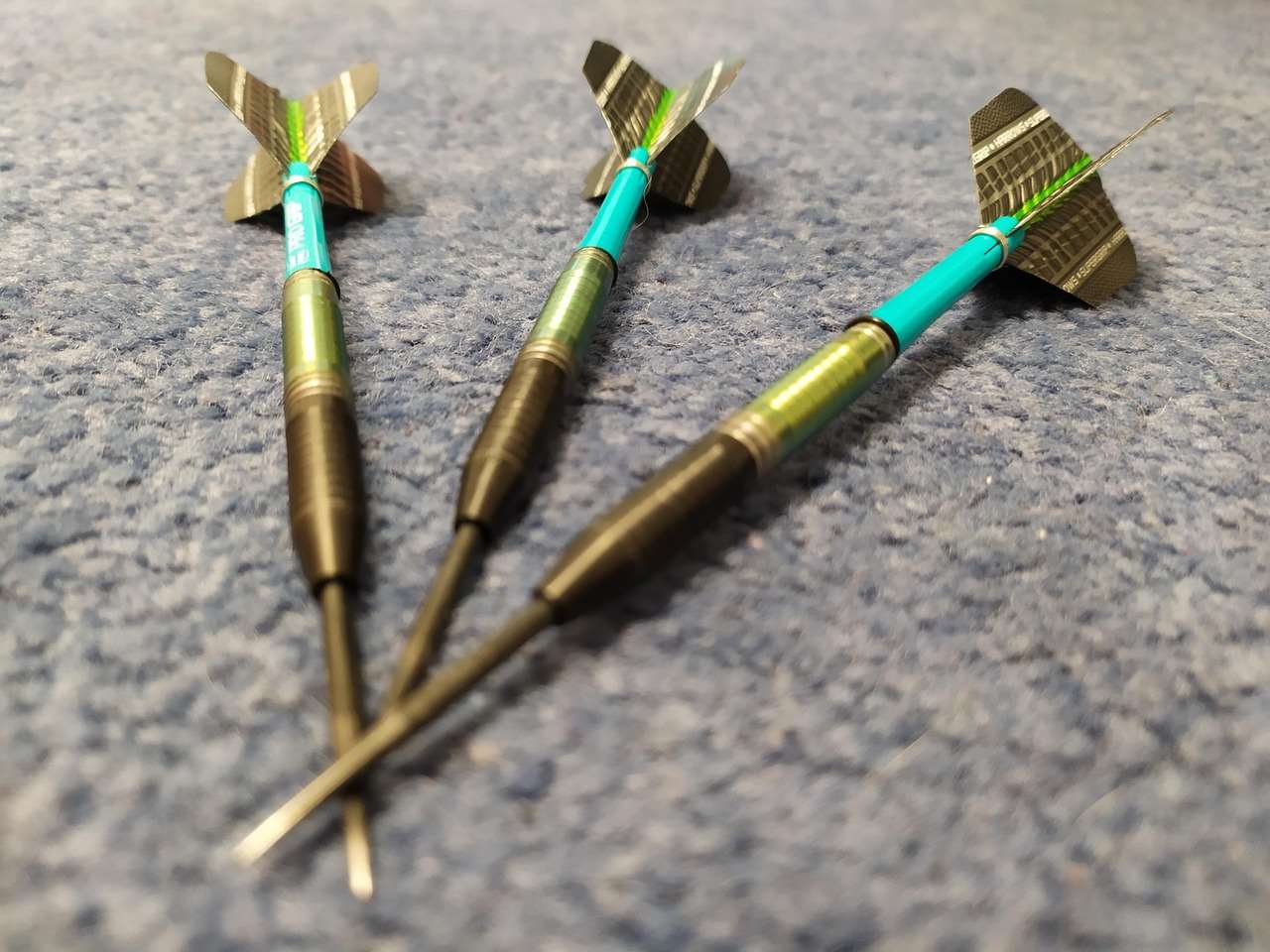Understanding steel tip handicaps rules is essential for creating fair and competitive dart matches, particularly when skill levels vary significantly. This article will break down how handicap systems work in steel tip darts, covering various methods and providing practical guidance for implementing them in your games. We’ll explore different handicapping approaches, learn how to calculate appropriate handicaps, and discuss best practices for ensuring everyone enjoys the game.
⚠️ Still Using Pen & Paper (or a Chalkboard)?! ⚠️
Step into the future! The Dart Counter App handles all the scoring, suggests checkouts, and tracks your stats automatically. It's easier than you think!
Try the Smart Dart Counter App FREE!Ready for an upgrade? Click above!
The Importance of Handicaps in Steel Tip Darts
In any competitive sport, including steel tip darts, disparities in skill can create an uneven playing field. Handicap systems are designed to level the playing field by giving less experienced or skilled players an advantage to compensate for their weaker performance. This ensures that matches are more competitive and enjoyable for everyone involved, fostering a more inclusive and engaging darting environment. Understanding the need for handicap rules is the first step towards implementing them effectively.
Why Use Handicaps?
- Promotes Inclusivity: Handicaps allow players of all skill levels to participate and compete.
- Enhances Competition: Closer matches create more excitement and encourage improvement.
- Encourages Participation: New players are more likely to join if they feel they have a chance to win.
- Maintains Interest: Experienced players stay engaged by facing challenging and unpredictable matches.
Before diving into specific methods, it’s crucial to grasp the fundamental principle: handicaps aim to equalize the **expected outcomes** of a match, not guarantee a win for the weaker player. It’s about making the contest closer and more interesting.

Different Methods for Applying Steel Tip Handicaps Rules
There are several approaches to applying handicaps in steel tip darts, each with its own advantages and disadvantages. The best method often depends on the specific group of players, the frequency of play, and the desired level of complexity. Let’s examine some common techniques for implementing darts handicap rules:
1. Point Spotting
Point spotting involves giving the weaker player a predetermined head start in a game, such as 501. For example, if two players are competing, one might start at 501 while the other starts at 451. The amount of points spotted is based on the perceived skill difference. To understand this better, consider reading about Simplified 501 game rules for novice players.
- Advantages: Simple to understand and implement, especially for casual games.
- Disadvantages: Can be difficult to determine the appropriate point spot accurately, especially with varying skill gaps. Doesn’t adjust during the game.
2. Set or Leg Spotting
In matches that consist of multiple sets or legs, the handicap can be applied by awarding the weaker player a certain number of sets or legs before the match even begins. For instance, in a best-of-five sets match, the weaker player might start with a 1-0 or 2-0 lead.
- Advantages: Can be used in conjunction with other handicap methods, providing an additional layer of equalization.
- Disadvantages: May not be suitable for shorter matches or situations where individual leg performance fluctuates significantly.
3. Average-Based Handicaps
This method relies on tracking each player’s average score per dart (APD) or per throw. The handicap is then calculated based on the difference between the players’ averages. For example, the higher average player might have to score a certain amount more each round. This approach is more complex but can provide a fairer and more dynamic handicap. If you are just starting out, have a look at Basic Darts Fundamentals for Beginners.

- Advantages: More accurate and adaptable, especially when using a consistent scoring system. Reflects actual performance.
- Disadvantages: Requires tracking player statistics and performing calculations, which can be time-consuming. May intimidate casual players.
4. Percentage-Based Handicaps
Similar to average-based handicaps, but instead of directly subtracting points, a percentage is applied to the higher-ranked player’s score. For example, the higher-ranked player might only get 90% of their actual score counted towards their total for each round.
- Advantages: Can be easier to understand than direct point subtraction, especially for percentages that are multiples of 5 or 10.
- Disadvantages: Can still require tracking and calculations, albeit slightly simpler ones.
5. Fixed Scoring Adjustments
In this system, a fixed adjustment is made to the scoring for the stronger player. For example, every score above a certain number (like 40 or 50) might only count as half for the higher-ranked player. This makes higher scoring more challenging and gives the lower-ranked player a better chance to catch up.
- Advantages: Relatively simple to implement once the adjustment number is set. Can make a big difference in leveling the playing field.
- Disadvantages: May need to be adjusted frequently based on performance changes. Can sometimes be too drastic if the fixed number is poorly chosen.
Selecting the right method depends on the context. For friendly games, simpler methods like point spotting might suffice. For more competitive leagues, average-based handicaps are generally preferred.
Calculating Handicap Values
Determining the correct handicap value is crucial for ensuring fairness. This often involves trial and error, but here are some guidelines for each method.
Point Spotting Calculation
Estimate the average difference in scores. For example, if one player typically finishes a 501 game in 20 throws and the other in 30 throws, the difference is 10 throws. Multiply this by the average score per throw (around 20-30) to get an estimate of the points difference. So, 10 throws * 25 points/throw = 250 points. Therefore, the weaker player might start at 501 and the stronger at 251. You might consider reading about How to make darts fairer with handicap rules.

Average-Based Handicap Calculation
Track each player’s average score per dart (APD) over several games. Calculate the difference in APD. Multiply this difference by the expected number of darts in a game. For example, if one player averages 40 APD and another averages 30 APD, the difference is 10 APD. If the game typically takes 30 darts, the handicap would be 10 APD * 30 darts = 300 points. This handicap could be applied through point spotting, adjusted scoring, or a combination of methods.
Adjusting Handicaps Over Time
Handicaps should be regularly reviewed and adjusted based on player performance. If a player consistently outperforms their handicap, it needs to be reduced. Conversely, if a player struggles even with a handicap, it might need to be increased. This ensures the system remains fair and accurate.
Best Practices for Implementing Steel Tip Handicaps Rules
Implementing handicap rules effectively requires more than just choosing a method and calculating values. Here are some best practices to ensure a smooth and enjoyable experience for everyone:
- Transparency: Clearly explain the handicap system to all players. Ensure everyone understands how it works and how values are calculated.
- Consistency: Use the same system consistently for all matches within a league or group. This avoids confusion and ensures fairness.
- Regular Review: Periodically review and adjust handicaps based on performance. This keeps the system accurate and prevents sandbagging (intentionally underperforming to gain an advantage).
- Open Communication: Encourage players to provide feedback on the handicap system. This can help identify issues and improve the system over time.
- Flexibility: Be willing to adapt the system if it’s not working well. Different groups may require different approaches.

Potential Challenges and Solutions
Implementing handicap rules can present some challenges. Here are some common issues and potential solutions:
- Sandbagging: Players intentionally underperforming to gain a higher handicap.
- Solution: Implement a robust review process, monitor player performance closely, and adjust handicaps aggressively for suspected sandbaggers.
- Complaints about Fairness: Players feeling the system is unfair.
- Solution: Be transparent about the system, explain the rationale behind the calculations, and be willing to make adjustments based on feedback.
- Complexity: Some handicap methods can be too complex for casual players.
- Solution: Choose a simpler method for casual games, or provide clear instructions and assistance with calculations.
Adapting Steel Tip Handicaps Rules for Different Settings
The best approach to handicapping might vary depending on the setting. Consider these adaptations:
Casual Games
For friendly games, keep it simple. Point spotting or set spotting are often sufficient. Focus on having fun and avoid overly complex calculations. When playing casual games, Alternative darts rules for home play can make things easier.
League Play
In more competitive leagues, average-based handicaps or percentage-based handicaps are preferred. Track player statistics carefully and adjust handicaps regularly. Enforce rules against sandbagging.
Tournaments
Tournaments may use a combination of handicap methods. Pre-determined handicaps based on player rankings or past performance are common. The tournament organizer should clearly communicate the handicap rules to all participants.

Conclusion
Understanding steel tip handicaps rules is vital for creating fair, engaging, and inclusive darting experiences. By carefully selecting a method, accurately calculating values, and consistently applying the rules, you can ensure that players of all skill levels can compete and enjoy the game. Remember to prioritize transparency, regular review, and open communication to maintain a system that is both effective and enjoyable for everyone involved. So, grab your darts, implement these strategies, and watch your darting community thrive! Ready to take your dart game even further? Consider exploring more Fun dart game variations with modified rules to keep things exciting and challenging!
Hi, I’m Dieter, and I created Dartcounter (Dartcounterapp.com). My motivation wasn’t being a darts expert – quite the opposite! When I first started playing, I loved the game but found keeping accurate scores and tracking stats difficult and distracting.
I figured I couldn’t be the only one struggling with this. So, I decided to build a solution: an easy-to-use application that everyone, no matter their experience level, could use to manage scoring effortlessly.
My goal for Dartcounter was simple: let the app handle the numbers – the scoring, the averages, the stats, even checkout suggestions – so players could focus purely on their throw and enjoying the game. It began as a way to solve my own beginner’s problem, and I’m thrilled it has grown into a helpful tool for the wider darts community.